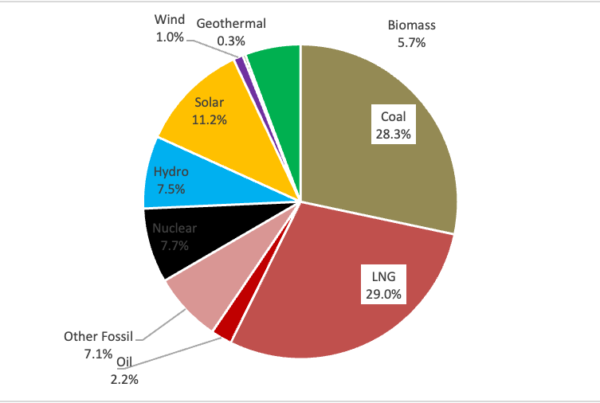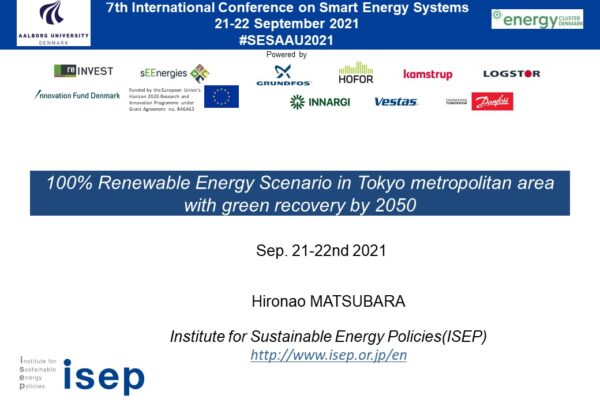The tariff calculation committee announced the report on the draft plan. ISEP made the evaluation on the design of Feed in Tariff.
Comment to draft plan of tariff calculation committee
The tariff calculation committee announced the report on the draft plan of tariffs and the consent matters. Japan FIT will be started on July this year and the committee has been discussing the tariffs and the duration of procurement.
Feed in prices and durations are considered valuable as major elements that we have been advocating are comprised, but others are still remained as important issues. For the diffusion of the renewable energies that could determine the future of Japan, it is necessary that the contents of the government decrees and the departmental regulations should be examined, and reform or improvement for the regulations and institutions will be necessary.
Main points to be evaluated and concerning points for full-scale implementation of renewable energy as our comments to the report are shown as below.
Main points to be evaluated
1. Setting tariffs based on cost and procurement duration
FIT prices and durations should be set at the rebel that renewable energy businesses could be profitable enough to continue to carry businesses as renewable energies can be promoted on a large scale, and with predictability based on the recent cost data and information.
- FIT prices are set by resource and scale of power plant based on information of current cost and business risk collected from industry institutions and corporations. Since information of current cost and business risk are limited so far, continuing studies and discussions will be necessary with introducing cost data of newly built power plants to set the prices for next year and beyond. Especially procurement category should be set meticulously by business scale and structure in the future.
- Tariffs have been set at the level with which renewable energy businesses can be predictable based on energy sources and scales. As business risk differs by energy sources, it is valued that project IRR is set variably by renewable energy sources. But wind power and geothermal are considered high business risk, deregulations and reforms of the system are desirable to reduce business risk.
- It is also valued that the durations are set 20 years considering the legal durable years of power plant, estimated usable period and business viability. But FIT system should furnish flexibility to meet possible changes in 20 years from now on. For example, power producers could access power exchange market easily as a result of power system reform, so the system could allow power producers to exercise an option to sell electricity in a market.
- As diffusion of renewable power plant will reduces the cost to introduce renewable power plant in the future, tariffs for newly built power plant should be reduced predictably basically every year. It is most desirable to set digression rate of next month beforehand, and the method to disclose predictable cost data frequently will be appropriate. In order to make these scheme happen, cost data for setting procurement category and tariff should be accumulated and a system to publicize them as frequently as possible and to utilize should be arranged. And the formula to calculate tariff based on construction costs and O&M costs also should be publicized, and calculation tools like excel formulas should be provided.
2. Biomass power
As biomass power productions are largely affected by type and cost of fuels, it is necessary to set detail conditions of scale and type of fuels and tariffs to accommodate each of them. Especially as to wooden biomass, tariff specifications should be based on CHP and cascading use of resources as prerequisite. (For further details, refer the proposal from JREF as of April 23rd, 2012)
- Biomass power productions are subject to utilization of local resources as its nature, so large power plant should be regulated as they need large quantities of fuels. For example, 20,000kW capacity is to set as upper limit and only waste should be used for coal combined fired power plant as the portion of biomass is small.
- Traceability system should be set with considering sustainability of biomass and sustainable utilization of biomass in Japan should be set as goal. (For further details, refer the proposal from Biomass Industry Network as of March 19th, 2012)
- As the cost of biomass power is set by law, incentives of fraud is inevitable structurally as all the stakeholders involved fuel supply chain like forest owner, collector, chip factory and power plant tend to sell resources as at high prices as possible. The guideline of traceability is planned by MOFA, and METI should provide fundamental resolutions as its own policy.
- Biomass ratio is not fixed as a condition applicable FIT law. The condition should be determined.
3. Purchase of total power for rooftop PV
As to rooftop PV electric power, FIT starts with continuing existing purchase mechanism of surplus amount in considering the situation to date. It is inevitable in terms of transitional treatment, but FIT for rooftop PV should be changed to full amount purchase, and to reconsider process is necessary with reviewing installation status.
- Surplus ratio varies by every household from 10 to 90%, so unfairness inheres in the system. Full amount procurement system is fair in itself.
- Significant diffusion will be possible by full amount procurement rather than surplus procurement. Cost reduction will be accelerated by learning effect with expansion of installation, so full amount procurement is advantageous in the long run.
- Some point that surplus procurement is more effective for energy reduction, but that idea indicates only short time and narrow effect. Energy efficiency should be achieved by inherent technologies and implementations. Others point that surcharge will be smaller in surplus procurement, but surcharge varies by tariff. Surcharge should be set properly based on full amount procurement system.
- It is not correct that construction cost surges with wiring for full amount procurement. Electric current is unchanged and metering data of producing electricity of PV can be used for tariff calculation. Work for measurement tool installation is same for both cases. No additional cost is necessary when full amount procurement system will be applied to newly installed PV.
Concerning points for full-scale introduction of renewable energy
1. To facilitate grid network and system adequate to large scale diffusion
As a good reference for the separation of power transmission and generation and power trading market, substantial priority access and priority supply should be realized, and grid expansion and adjustment of power fluctuation including grid connection among power utilities should be arranged affirmatively. Especially wind power resources reside disproportionately by region, so arrangement of grid network is essential in order to install wind power on a large scale. (For further details, refer the proposal from JREF as of February 16th, 2012)
2. When introduction of cost based tariffs and development of grid networks are implemented subject to renewable energy diffusion, burden of consumer (surcharge in electricity price) during diffusion periods until around 2020 will be high temporally. But burden of renewable energy will make burden of fossil fuel smaller, so it is necessary to compare renewable energy burden with fossil fuel burden and nuclear burden that have been included in electricity bill so far. Diffusion of renewable electricity will rather not only enhance investment for domestic businesses but also produce employment and vitalize local economy at the same time. These advantages should be appreciated. Surcharges will be calculated by subtracting avoidable cost from tariffs. Market price should be used instead of avoidable cost in order to secure transparency and objectivity. To make this happen, electricity system reform is necessary as sooner as possible. Even if avoidable cost is adapted, it must be include fix cost not only variable cost.
3. Setting policy objectives for introduction of renewable energy
There are several advantages in full-fledged introduction of renewable energy as below. Firm policy objectives should be set from the middle and long range point of views in the new energy basic plan which is now being discussed.
- Large amount of renewable energy can be introduced in the short range and it can replace nuclear and fossil fuel and play a key role in the future energy supply. (Many references in Europe and other oversees countries)
- It also can reduce the dependence on fossil fuel because of global mainstreams of climate change, and the risk of fossil fuel supply (surge of fossil fuel price) Though the shift from nuclear to fossil fuel like coal, oil and natural gas can be a choice as a short term solution, nuclear power is questionable in terms of safety and economy. (reduction of reliance on nuclear power, drastic reduction of GHG)
- It produces economic effects including capital investment, business investment and employment. It vitalizes local economy in the area of fluent renewable energy potential.
- It produces enterprises that can enter global renewable energy market by leveraging domestic renewable energy industry.
4. Introduction of large scale renewable energy businesses
In case of implementing mega solar PV business (larger than 1,000kW), it is necessary to introduce system for getting social acceptance including land use. As to wind power, size of project becomes several tens of kW as a mainstream, priority access, arrangement of grid network and social acceptance including land use are set in the system. Specifically the following two programs are important for social agreement.
- Zoning of perceptional land use
- Local ownership, participating of local stakeholders to decision making process and return of profit to local community
5. To learn from experiences in Europe as a successful precedent
FIT has been introduced in more than 80 countries and jurisdictions worldwide and especially in Germany which goes ahead more than 20% of electricity is produced by renewable energy after the introduction of 2000. (In Japan around 10% of electricity is produced by renewable energy including large hydropower) In Germany PV installation reaches 250,000kW cumulatively in the year end of 2011, and that is 5 times of that in Japan, and it means that 10 times of PV has been installed considering the scale of domestic electricity production. In Germany annual newly installed PV goes beyond 7,000,000kW which is 5 times larger than that of Japan. In Germany continuous renewable energy implementation policy has been proceeding along with adjusting FIT contents and learning from own experiences. In Japan renewable energy policy should be reconstructed by learning experiences of proceeding Europe and by constructing international policy network.





